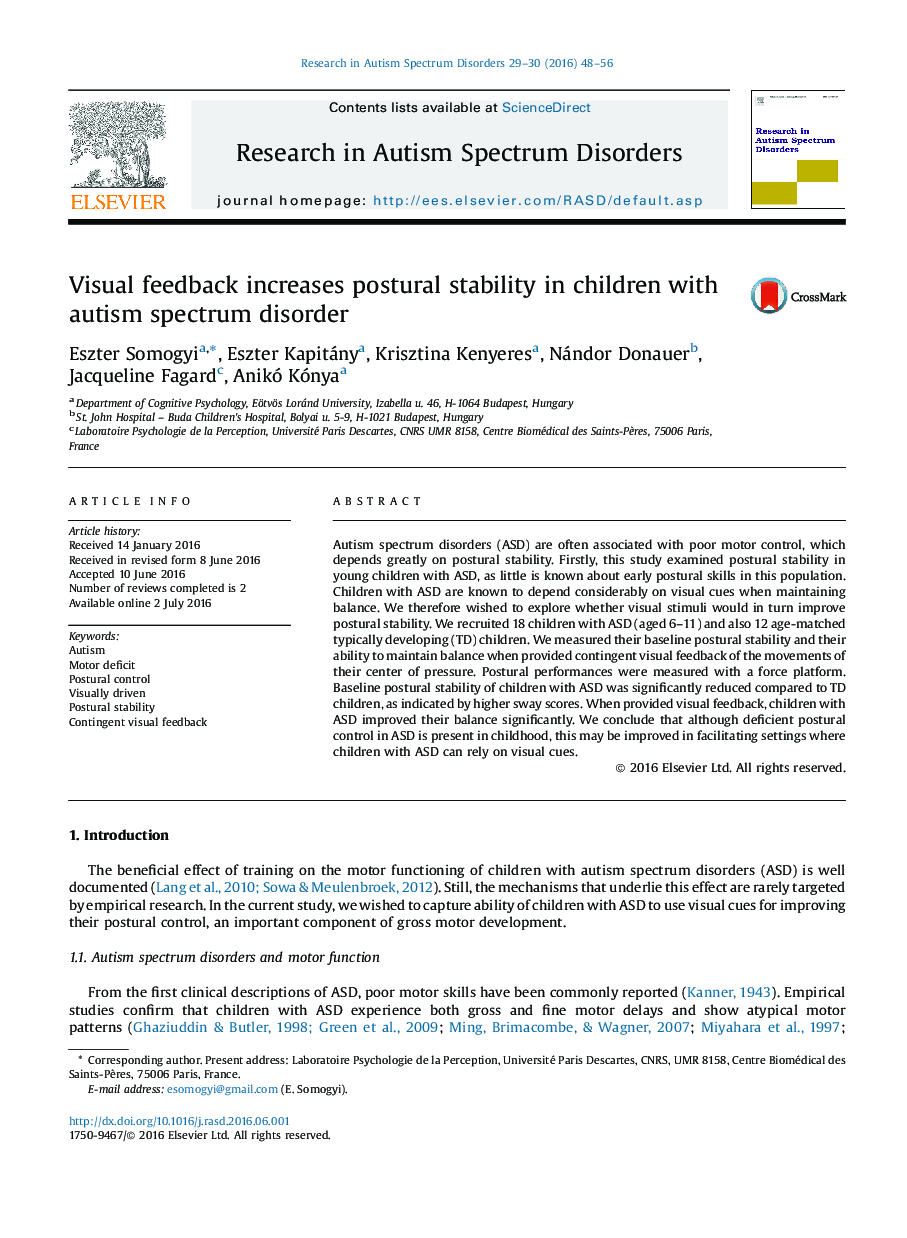| Article ID | Journal | Published Year | Pages | File Type |
|---|---|---|---|---|
| 369905 | Research in Autism Spectrum Disorders | 2016 | 9 Pages |
•We examined postural control and ability to improve posture in children with ASD.•ASD children were significantly more unstable than TD controls at baseline.•They improved significantly when given visual feedback of their center of pressure.•Posture training with visual feedback might improve general motor control in ASD.
Autism spectrum disorders (ASD) are often associated with poor motor control, which depends greatly on postural stability. Firstly, this study examined postural stability in young children with ASD, as little is known about early postural skills in this population. Children with ASD are known to depend considerably on visual cues when maintaining balance. We therefore wished to explore whether visual stimuli would in turn improve postural stability. We recruited 18 children with ASD (aged 6–11) and also 12 age-matched typically developing (TD) children. We measured their baseline postural stability and their ability to maintain balance when provided contingent visual feedback of the movements of their center of pressure. Postural performances were measured with a force platform. Baseline postural stability of children with ASD was significantly reduced compared to TD children, as indicated by higher sway scores. When provided visual feedback, children with ASD improved their balance significantly. We conclude that although deficient postural control in ASD is present in childhood, this may be improved in facilitating settings where children with ASD can rely on visual cues.
